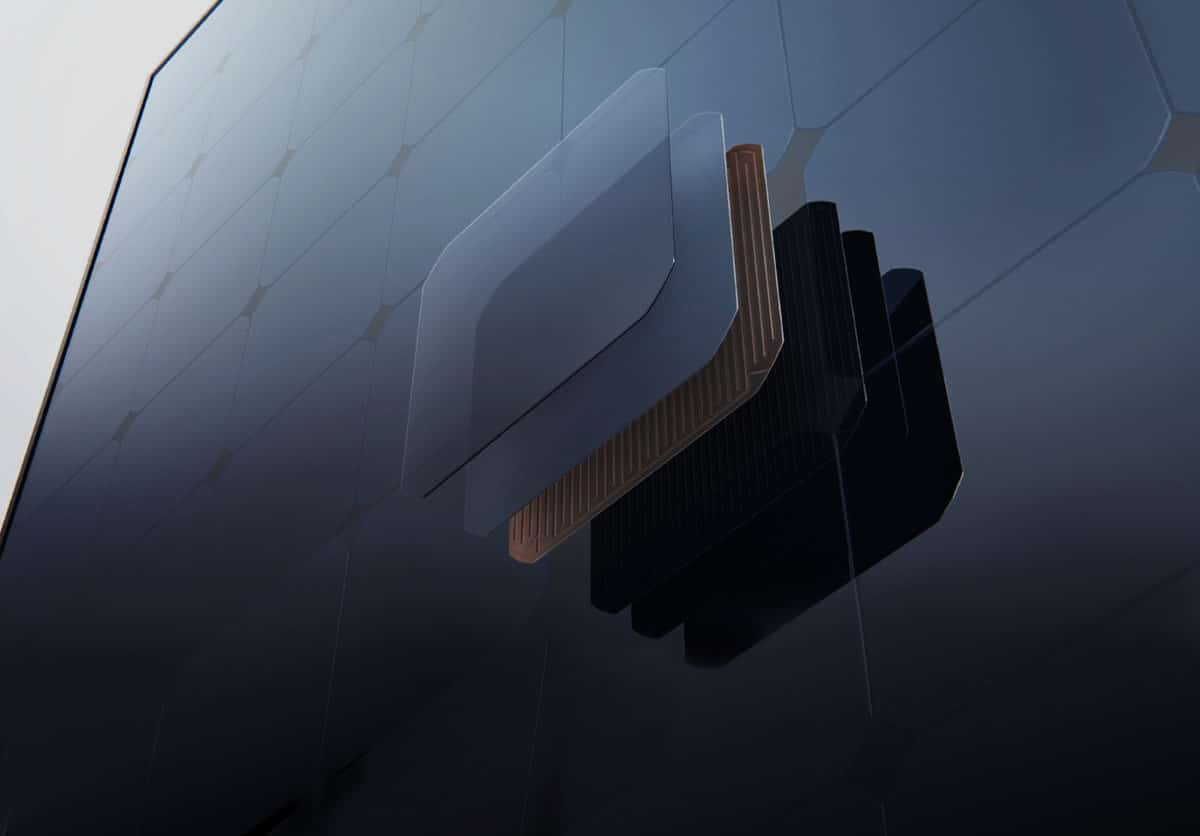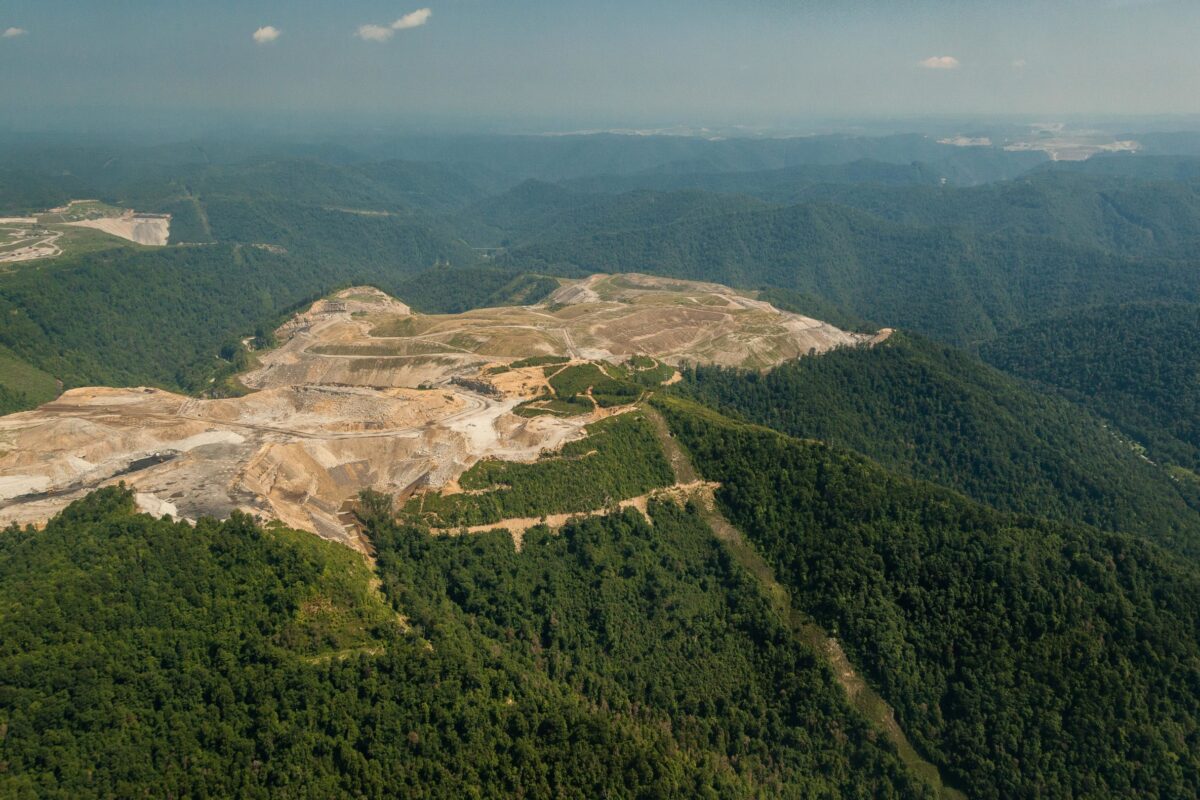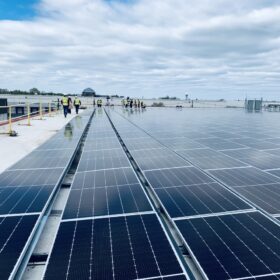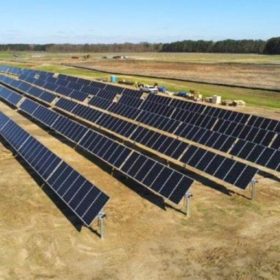Late last year, SunPower announced it would be spinning off its high-efficiency manufacturing business into a new company, Maxeon Solar Technologies. Maxeon products have historically led the industry as the world’s highest-efficiency solar modules.
Tianjin Zhonghuan Semiconductor (TZS), one of the world’s largest wafer makers, is pouring $298 million into Maxeon Solar.
pv magazine spoke with the SunPower brain trust: CEO Tom Werner, EVP of Corporate Strategy and Business Development Peter Aschenbrenner, and the new CEO of Maxeon, Jeff Waters, about this massive change in the company’s structure and strategy.
Part 1 of the interview covered energy storage and how to disintegrate a solar company. In this, part 2 of the interview, the executive leaders cover the intricacies of its new manufacturing operation.
This interview has been edited and condensed.
Maxeon and its new CEO
Jeff Waters: I joined the company about a year ago. The majority of my career was in the semiconductor industry. I worked with Peter [Aschenbrenner, EVP] to help create the deal to facilitate the carve-out of Maxeon — and now I’m going to stay on as the CEO of Maxeon.
Maxeon is going to be domiciled in Singapore but effectively, we are everything that is not the downstream for the U.S. and Canada. I think people traditionally looked at us as just being the upstream side. Certainly we have the product development, we have manufacturing facilities, all the innovation that Tom talked about, all the scale that Tom talked about, but we also have a very significant downstream presence outside of the U.S.
We have over a thousand channel partners spread out throughout the world, over 700 in Europe, over 200 in Australia, 80 or so in Japan. We sell over 70% of our business outside of the U.S.
pv magazine: These are SunPower authorized installers and distributors?
Peter Aschenbrenner: Yes. We’ve been building that presence for almost as long as we have in the U.S. So, it’s a very similar playbook to what’s been done here in the U.S.
On the scale side of it, this is where that investment from Tianjin Zhonghuan semiconductor comes in. It’s $298 million. We’re going to take that $298 million, plus we’re already working on $300 million in additional debt that’ll get added on top of that. We’ll have enough cash and capital to really start to scale-up the technology in a way that we have not been able to do in the past.
Jeff Waters: Given that we’ve got such a strong demand for our product and technology, being able to scale it up to go out and meet those demands will be a great thing for us. And that $298 million — it’s really earmarked to go toward our Maxeon 5 technology
pv magazine: Going from 125 millimeters to 156 millimeters?
Jeff Waters: The rest of the industry did that a long time ago. It just took us a little longer. So, with the additional dollars, we’re going to be scaling up the Maxeon 5 product and that’s going to start once the deal closes. Then we’ll start investing in additional production lines.
We’ve also got the performance series, the P-series, product. This is the Cogenra acquisition technology that’s now scaling up — and we do that through a joint venture, also with TZS over in China.
That’s also scaling. That factory produces two gigawatts of annual capacity of the P-series product, but we’ve already announced that we’re going to be scaling up an additional three gigawatt over the course of this year, so that’ll go to five gigawatts, and we would expect it to scale beyond that as well.
We get a percentage of that off-take. We get up to two-thirds of that. For us, it’s a kind of a highly leveraged capital-light effort.
pv magazine: The P-series originated with the Cogenra technology?
Peter Aschenbrenner: Yes, we bought them, put the SunPower technology overlay on it, qualified it, got it started in Mexico, built two lines for a total 400 megawatts, now in Oregon, but did most of the scaling in China at this new facility.
Jeff Waters: It’s differentiated technology both on the Maxeon side and also on the P-series. The dealer channels effectively give us a closer touch to the customer that allows us to make the up-sell on our value to the customers. And that’s really what’s made us so strong in the DG space, not just here in the U.S. but abroad.
pv magazine: In the international solar module cost race, where module builders are trying to get to sub-20-cents-per-watt, you are somewhat able to stay above the fray. When you’re talking to a customer, they’re going to have to pay a premium for SunPower. You’ve done that for more than ten years — how does that play out at the customer today?
Jeff Waters: Here’s an anecdotal example — I was talking with a parent at my son’s basketball game last weekend and they told me they just made the decision to go with SunPower. I asked them, “So, why did you choose SunPower?”
He had sat down with one of our dealers and what got them was the slower degradation over the life, the greater energy production over the life of the system, and also the 25-year warranty. Those are the key pieces that got them.
And of course – the power per panel. Because for them, although they had a larger roof, they said the usable roof space was still relatively constrained. You have trees, chimneys, etc. They said they could have probably squeezed in a non-SunPower set of panels and still gotten the job done. But with SunPower, it was easier to get done.
Peter Aschenbrenner: Those things — higher efficiency, better reliability, slower degradation and just overall top quality, that’s what people buy in some measure in all of these markets.
pv magazine: A high-end American vendor who’s been around for years?
Peter Aschenbrenner: You know, it’s LG and Panasonic and REC and these non-Chinese players that are making a similar pitch and helping us build the high-end market. There’s some fraction of people that want to go with the best – and those are the ones that are more susceptible to our marketing.
That’s one of the motivations for TZS investing a large chunk of money in Maxeon. They’re very savvy technologically, particularly the guy who runs the company. They believe, as we do, that at the end of this arc, there is a solution with back contact architecture that’s actually cheaper or provides lower cost electricity than other approaches.
pv magazine: So there’s still room to grind down some cost reduction?
Peter Aschenbrenner: I think TZS is convinced that there’s a winning product there that’s not niche. We can get a little bit higher efficiency along with significant complexity reduction.
That’s really the interesting challenge for us now — because we’ve been scaling with the industry more or less, we’ve been creating and mining these premium markets, and we’re still doing that. But we think we can reduce the number of manufacturing steps and become more cost effective as well.
Jeff Waters: Absolutely. And not only cost effective on the product side, but also on the cap-ex back side. With each new generation that we’ve had, with our Maxeon line or our other products, there was a 50% reduction in capex per watt, and going from Maxeon 5 to Maxeon 6, the targets are the same. So capital deployment gets simpler and, as Peter said, it opens up a broader swath of market for us.
Tom Werner: There’s a large segment of the home market that wants a future-proof solution. Whether it’s a bathroom remodel or kitchen or putting solar panels on your roof for 25 years.
A lot of the buyers say to the dealer, “I want the best.” And objectively, we are the best.
This content is protected by copyright and may not be reused. If you want to cooperate with us and would like to reuse some of our content, please contact: editors@pv-magazine.com.








The SUNPOWER share will be able to double in 2020, if it can generate even a single dollar of real PROFIT. For years the market has been waiting for this news, and then with the creation of MAXEON SOLAR speculation will have to buy back the SUNPOWER shares sold until the day before the SPIN OFF. The bears will have to deal with the big investors who will rush to buy the new SUNPOWER and the brand new MAXEON SOLAR.